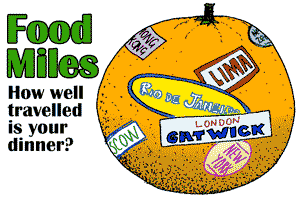"Most lawns are purely cosmetic in function. Thus, affluent societies have, all unnoticed, developed an agriculture which produces a polluted waste product, in the presence of famine and erosion elsewhere, and the threat of water shortages at home"-Bill Mollison
 |
| Pretty handy book if your in to gardening or self sustainablility... |
My current night stand read is Introduction to Permaculture by Bill Mollison. Mollison is credited as being the founder of Permaculture, which essentially focuses on establishing sustainable cultures through sustainable food production, urban design,even efficient use of city refuse (humanure) and so forth. I first heard about Mollison while reading some of Joel Salatin's work. The past couple of years I have been reading gardening books and putting my skills to the test, but permaculture is the equivalent to putting your garden on steroids.* The point of this post is that it is spring time and therefore time to start getting seeds ready or at least planning your garden. Even a couple of symbolic tomato plants on the patio hepls. Here is a photo of some plant's from my garden last year.
 |
| The Brassica gang holding down fort. |
In any case, I would reccomend the book and the practices it espouses to just about anyone. Whether you are interested in good health or the environment, self subsistence, or even saving a buck; growing your own food is a good idea. Personally, I do it for all of the above. Growing your own food is great supplemental exercise for the fitness enthusiast and probably adequate for the lay person if they take an old school approach and minimize the use power tools. On top of that, you can't beat fresh food. No matter what "diet" one follows, low carb, paleo, vegan/vegetarien, etc. All of these diets tend to include some plant matter unles your trying to get your Vilhjalmur Stefansson on (see bio).
 |
| This is proof that mowing the lawn is much less cool in contrast to gardening. |
Current events taking place in the world further validate the need for at least the supplemental production of local food. Not to start any debates on the merits of the globalized food production system, but the current situations in Japan and the middle east illustrate this point quite well. For example, imagine if nuclear fallout indeed did make its way over to California soil. California is the number one food producing state in our country (1). According to a California tourist site, which I will be the first to admit may not be the most credible source, California produces over half the nations fruit, vegetable, and nut products, along with being a major dairy producer (2). Personally I know a majority of the produce I have eaten since late December has come via California.
 |
| Our food is often times more traveled than we are. |
Certain foods are also highly specialized in only one or two parts of the country leaving the entire crop production highly vulnerable to disease or natural disaster. For example a majority of the worlds corn is grown in the midwest and Brazil. An article released from University of California-Davis also reports that 60 perccent of the nations apples come from Washington state alone (3). With that in mind, I understand that we can't live in fear of hypothetical situations, but it is probably prudent for the country not to put all of its eggs (and other foods) in one basket. A little bit of effort by surburanites and even city dwellers could really help to fortify our food base as well as increase the general nutrition of the food we eat.**
Think about how much food could be produced in suburban yards as well as the gas from lawn mowers that could saved or reallocated, and nitrogen run off from all the turf builder/fertilizer applied. We would also drastically cut down on food mileage. According to a report form the Leopold Center for Sustainable Agriculture at Iowa State University, its takes about 250 Calories to produce a typical pound of pears or apples once all fuel input is taken into account (4). According to nutritiondata.com, a pound of apple only provided about 250 Calories itself (see here). In my current city, Chicago, it takes an average of 1518 miles traveled to put produce on the table (4). In Michael Pollan's The Omnivores Dilemma, it is written that it takes roughly 10 Calories to produce every 1 Calorie provided in typical California grown lettuce.
I am trying to further develop my food production adroitness this year by starting all my plants from seed, but it really can be as simple as buying a few plants from Lowes or Home Depot and plopping them in the ground, followed by an occasional watering and weeding. It really comes back to the situation being a win-win. We can have people reconnected with their food, use millions of acres of "lawn" to grow food rather than practice indentured servitude to grass. There are obviously flaws in the current system of food production, and getting out and growing a little of your own certainly wouldn't hurt.
 |
| Mixing up some of my seed starting mix...home made compost, potting soil & vermiculture |
* Just to be clear in "gardening on steroids" comment I mean Permaculture is a step up in terms of sustainability and production. I am not referring to use of synthetic fertilizers or using pesticides.
**Analytical studies show that certain processing techniques and the travel/aging of foods can cause nutrient loss in the form of vitamin and phytochemical loss (
5,
6).






No comments:
Post a Comment